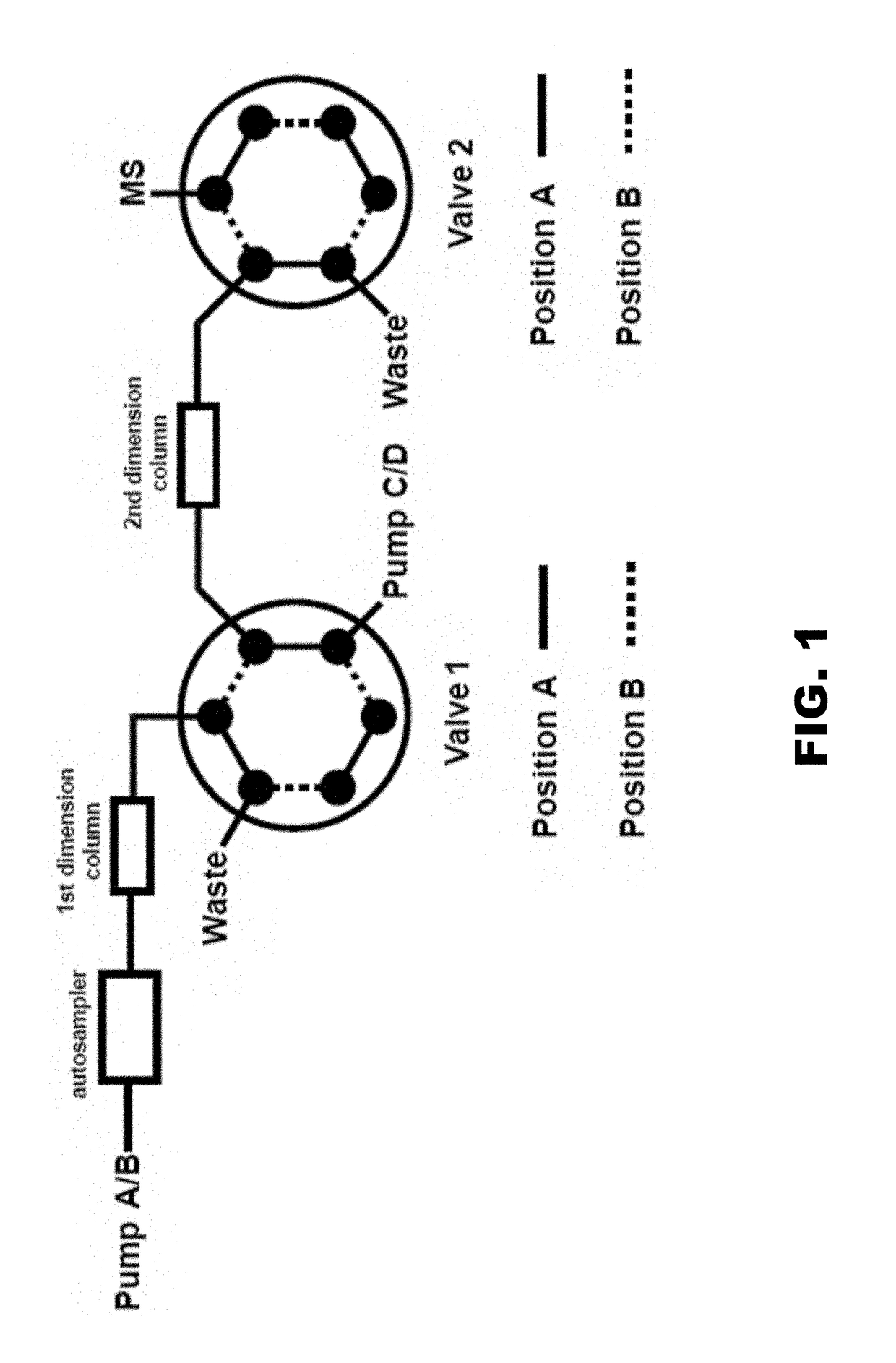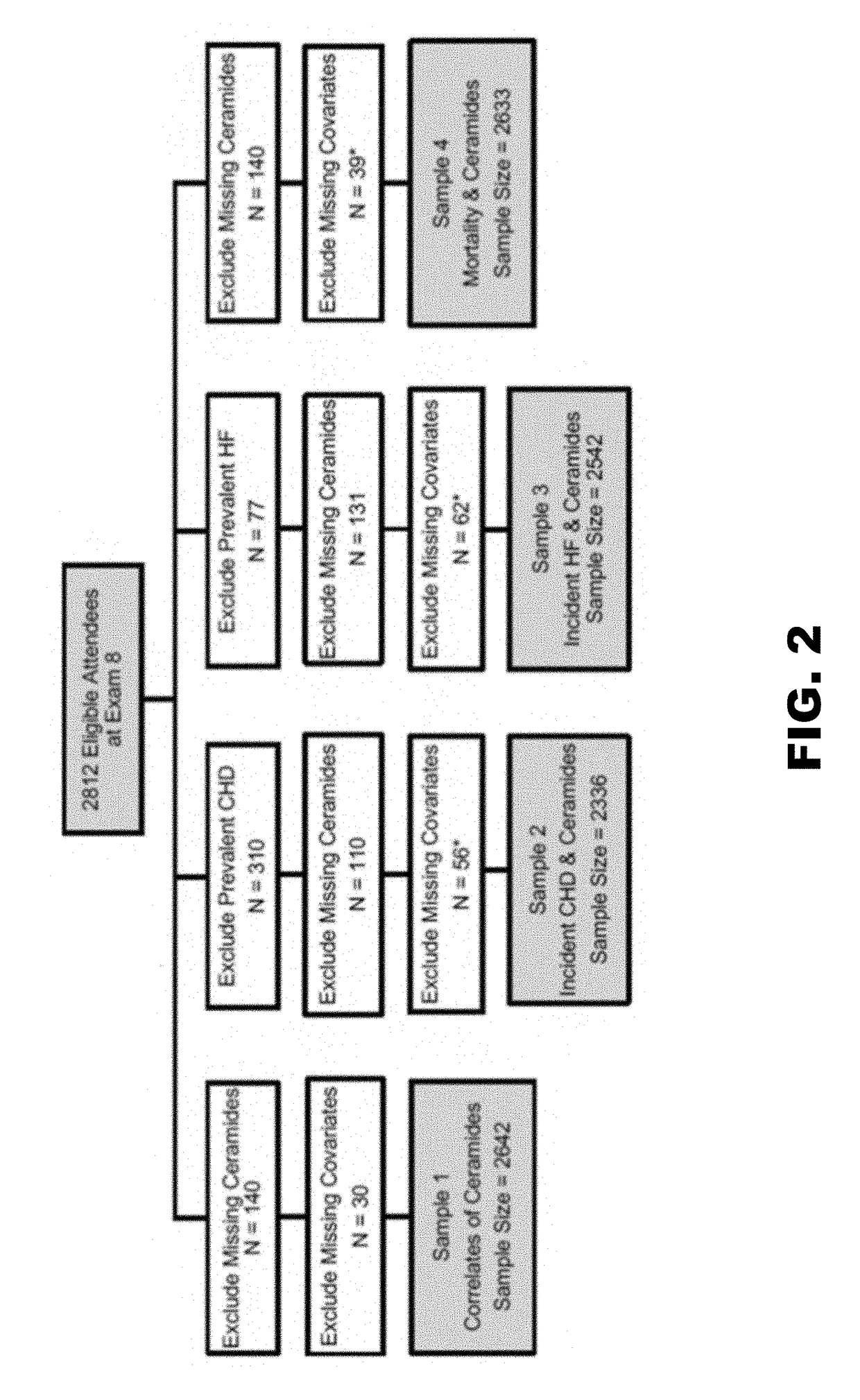Methods of detecting ceramide
- Summary
- Abstract
- Description
- Claims
- Application Information
AI Technical Summary
Benefits of technology
Problems solved by technology
Method used
Image
Examples
example 1
Quantification Assay
[0131]A liquid chromatography / mass spectrometry assay was developed to quantify plasma C24:0, C22:0, and C16:0 ceramides and the assay was used to determine ratios of very long chain to long chain ceramides in 2,642 Framingham Heart Study (FHS) participants and in 3,135 Study of Health in Pomerania (SHIP) participants.
[0132]Quantification of Ceramides
[0133]A fully validated liquid chromatography-tandem mass spectrometry assay was developed to quantify C24:0, C22:0, and C16:0 ceramides in frozen fasting plasma samples. A two-dimensional liquid chromatography-tandem mass spectrometry (LC-MS / MS) method for quantification of C24:0, C22:0, and C16:0 ceramides was developed according to FDA guidance for bioanalytical method validation.
[0134]Standard Curves and Quality Control (QC) Samples
[0135]Because of the endogenous presence of C16:0, C22:0, and C24:0 in human plasma, 5% bovine serum albumin (BSA) aqueous solution was used to prepare the calibration standards. Calib...
example 2
c Cancer Study
[0224]All patients with pancreatic ductal adenocarcinoma enrolled in two recent trials with available baseline plasma or serum were included. One study was a Phase 1 trial of zoledronic acid as neo-adjuvant, perioperative therapy in patients with non-metastatic, resectable pancreatic adenocarcinoma (ZMA). The other study was an open-label, dose-finding, non-randomised, phase 1b study of CCR2 inhibition in combination with FOLFIRONOX in treatment-naïve patients with borderline resectable or locally advanced biopsy-proven pancreatic ductal adenocarcinoma (FOLF).
[0225]Patient Characteristics
[0226]There were 66 patients total (47 from FOLF, 19 from ZMA). The mean age of the patients was 62.2 with 46.3% women. Over a median follow-up period of 1.43 years (95% CI 0.98-2.60), there were 52 deaths (78.8%).
[0227]The patients in the study of the predictive value of ceramides were previously described in a study of Zoledronic Acid or in a study of CCR2 inhibition plus FOLFIRINOX....
PUM
 Login to View More
Login to View More Abstract
Description
Claims
Application Information
 Login to View More
Login to View More - R&D
- Intellectual Property
- Life Sciences
- Materials
- Tech Scout
- Unparalleled Data Quality
- Higher Quality Content
- 60% Fewer Hallucinations
Browse by: Latest US Patents, China's latest patents, Technical Efficacy Thesaurus, Application Domain, Technology Topic, Popular Technical Reports.
© 2025 PatSnap. All rights reserved.Legal|Privacy policy|Modern Slavery Act Transparency Statement|Sitemap|About US| Contact US: help@patsnap.com



